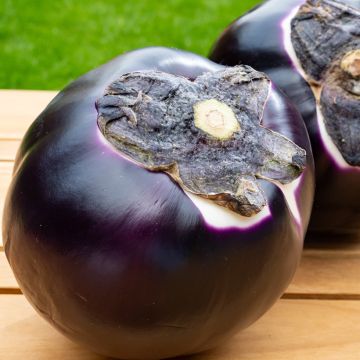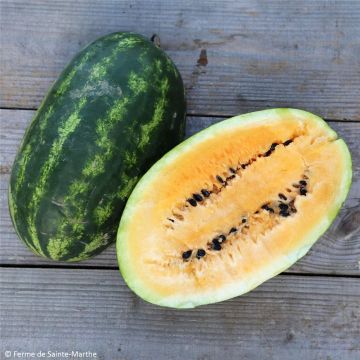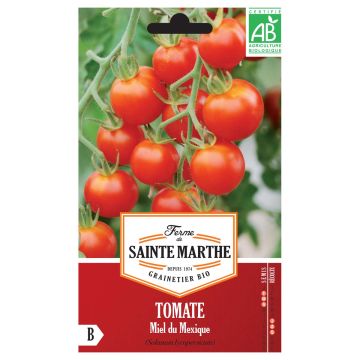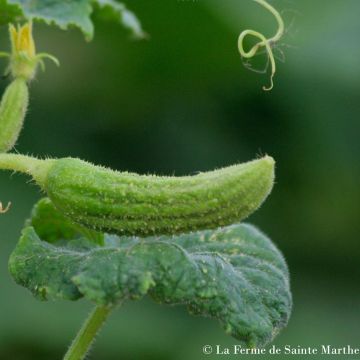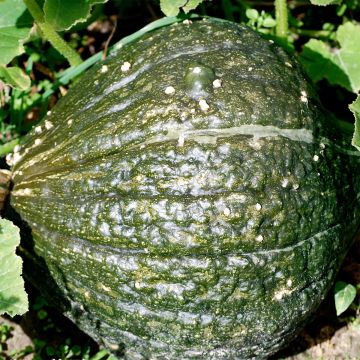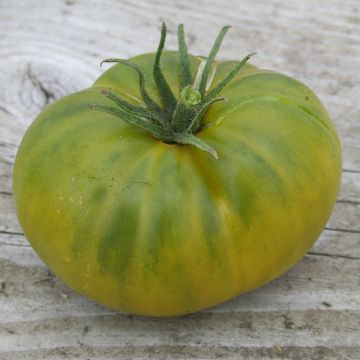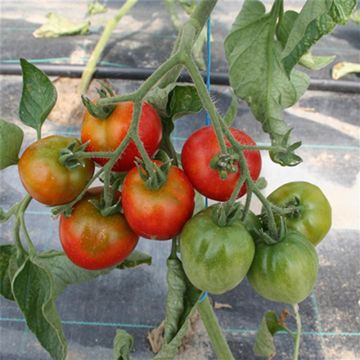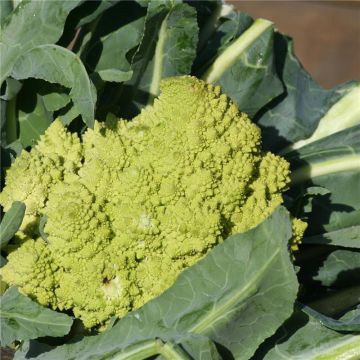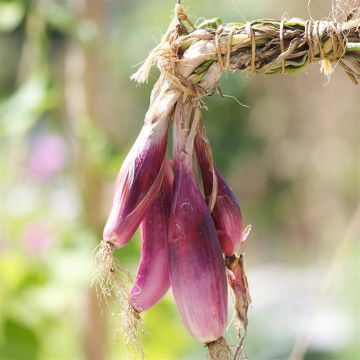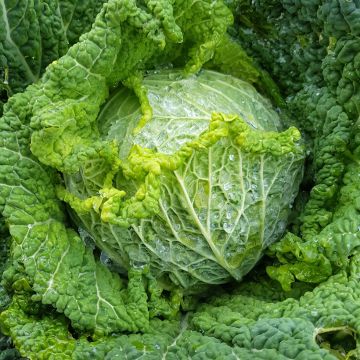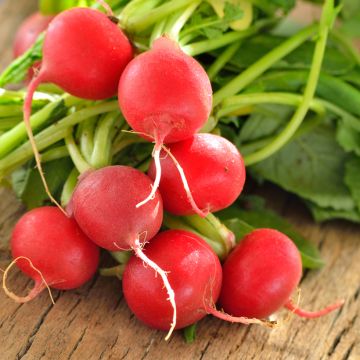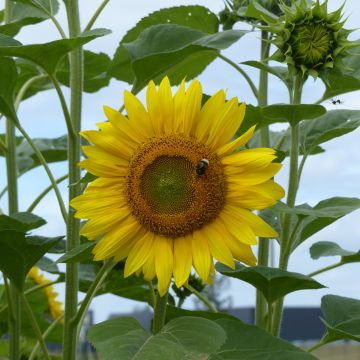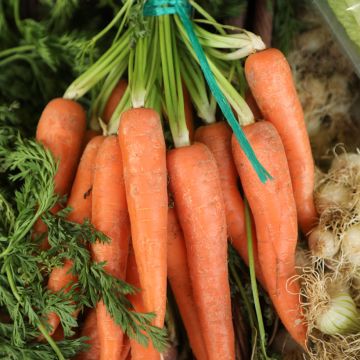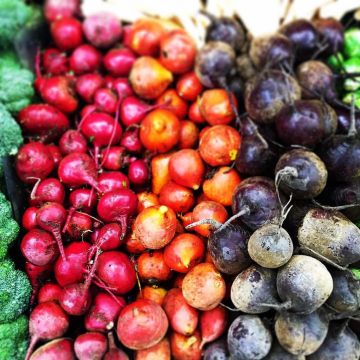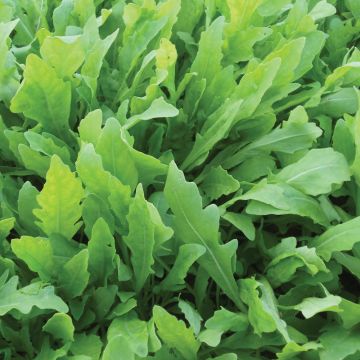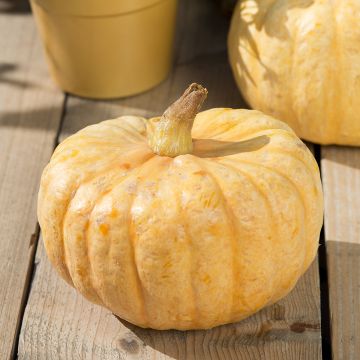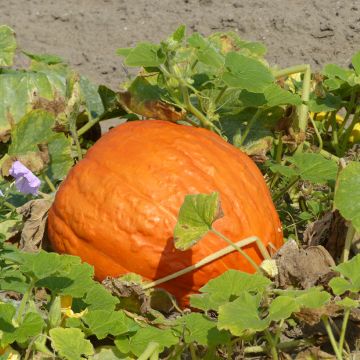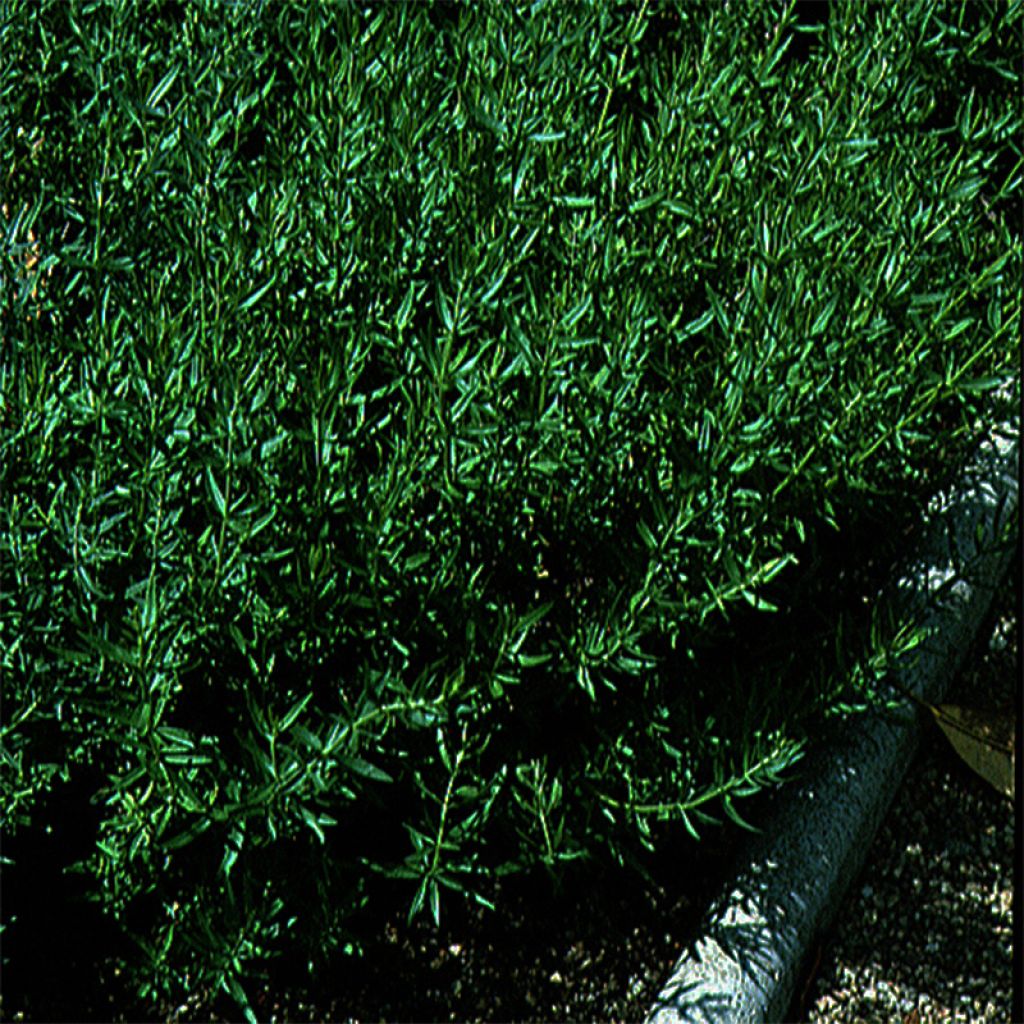

Hysope Bio - Ferme de Sainte Marthe
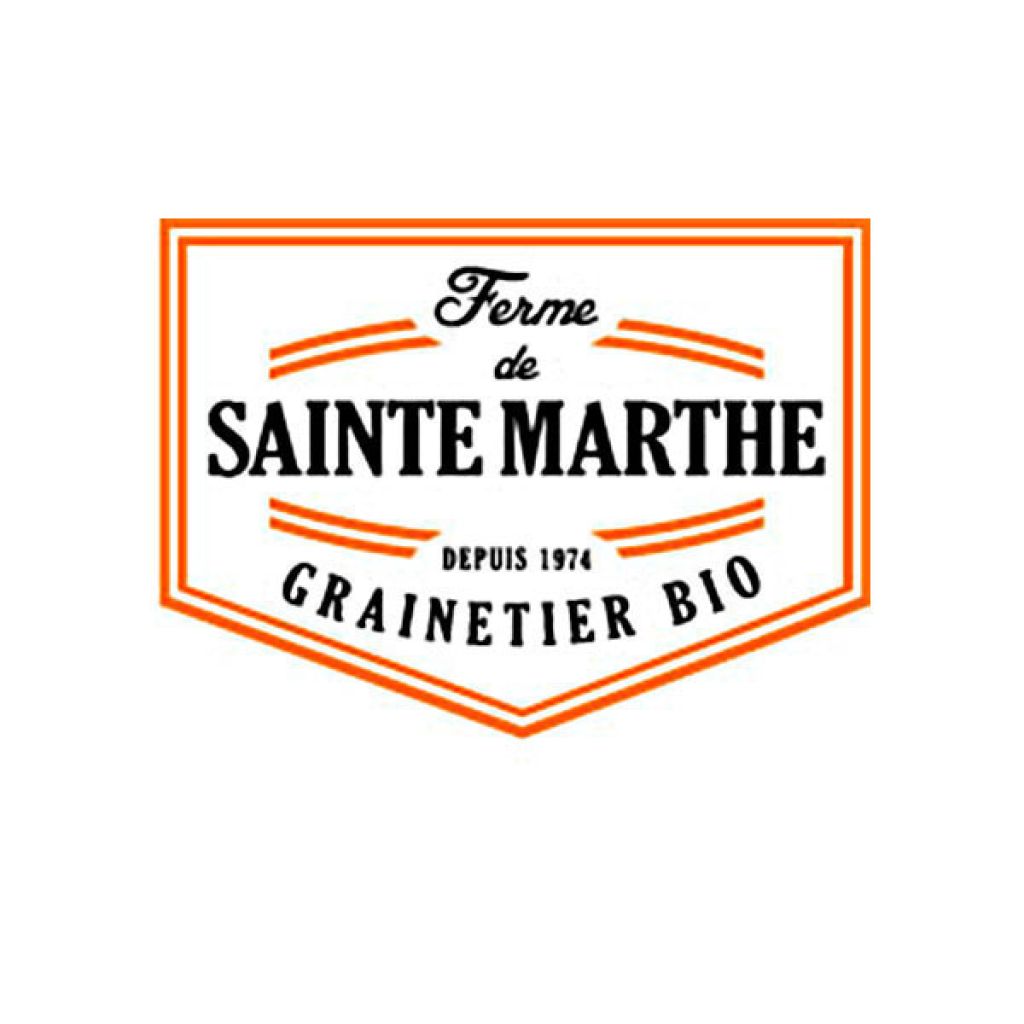

Hysope Bio - Ferme de Sainte Marthe
Hysope Bio - Ferme de Sainte Marthe seeds
Hyssopus officinalis
Rock hyssop
I highly recommend this website!
SCI Maraîche B., 28/02/2017
This item cannot be shipped to the selected country
Dispatch by letter from €3.90
More information
Schedule delivery date,
and select date in basket
This plant carries a 6 months recovery warranty
More information
We guarantee the quality of our plants for a full growing cycle, and will replace at our expense any plant that fails to recover under normal climatic and planting conditions.
Seed-only orders are dispatched by sealed envelope. The delivery charge for seed-only orders is €3.90.
Description
L'Hysope parfois appelée Agastache fenouil, Anis hysope, Hysope anisée, Grande hysope ou encore Herbe sacrée est une vivace herbacée portant de grands épis mauves dégageant des senteurs d'anis et de menthe mêlés au moindre effleurement. Elle nous provient d'Amérique du Nord où elle était utilisée à la fois comme plante médicinale et condimentaire par les tribus indiennes.
L'Hysope est une Lamiacée qui peut atteindre un mètre de hauteur. Très buissonnante et très ramifiée, elle forme de juillet à octobre de grands épis fleuris mauve à lilas. Les tiges à section quadrangulaire portent des feuilles vert clair lancéolées aux marges dentées, elles sont opposées et font 8 cm de long en moyenne. Au moindre effleurement, toutes les parties de la plante dégagent une très vive odeur de menthe citronnée et d'anis. L'Hysope affectionne la chaleur. Même si elle n'est pas en plein soleil, veillez à son confort elle n'en sera que plus prolifique. Positionnez-la dans un sol peu acide à peu calcaire, riche en matières organiques et secs. Un terrain rocailleux peut lui convenir grâce à sa racine pivotante profonde. L'Hysope peut également se cultiver en pot sur une terrasse ou un balcon pour peu que le contenant soit suffisamment grand. Effectuez vos semis de février à avril.
Récolte : récoltez au fur et à mesure de vos besoins. La cueillette du feuillage peut avoir lieu dès le printemps. Il faudra patienter jusqu'à l'été pour récolter les sommités fleuries.
Conservation : vous n'aurez qu'à soustraire quelques feuilles ou branches à la plante au sécateur et vous les ferez sécher tête en bas dans un lieu sec et ventilé. Séchée, l'Hysope s'utilise en tisane pour ses vertus digestives et expectorantes. Les fleurs fraiches relèvent les plats de salades, de viandes en leur conférant un léger goût de réglisse. Traditionnellement, l'Hysope est utilisée par les Indiens d'Amérique dans la confection des plats et dans la pharmacopée.
Le petit truc du jardinier : pensez à l'Hysope si vous souhaitez protéger d'autres plantes des limaces ou autres invertébrés goulus. Ils détestent les plantes aromatiques ; lesquelles feront office de repoussoirs particulièrement efficaces et écologiques. Ajoutons, que l'Hysope est une plante très mellifère attirant les papillons.
Report an error about the product description
Harvest
Plant habit
Foliage
Botanical data
Hyssopus
officinalis
Lamiaceae
Rock hyssop
Mediterranean
Perennial
Other Sainte Marthe farm
Planting and care
Culture : effectuez vos semis de février à avril au chaud à 18°C en enfouissant les graines sous un demi cm de terre. Si vous préférez attendre pour semer en pleine terre, réalisez l'opération en mai. Dans tous les cas, il faudra attendre 14 jours pour voir apparaître les premières pousses. Espacez les plants d'au moins 15 cm.
L'Hysope affectionne la chaleur. Même si elle n'est pas en plein soleil, veillez à son confort elle n'en sera que plus prolifique. Positionnez-la dans un sol peu acide à peu calcaire, riche en matières organiques et secs. Un terrain rocailleux peut lui convenir grâce à sa racine pivotante profonde. Par ailleurs pensez à elle si vous souhaitez protéger d'autres plantes des limaces ou autres invertébrés goulus. Ils détestent les plantes aromatiques ; lesquelles feront office de repoussoirs particulièrement efficaces et écologiques.
Seedlings
Care
Intended location
-
, onOrder confirmed
Reply from on Promesse de fleurs
Vegetable seeds
Haven't found what you were looking for?
Hardiness is the lowest winter temperature a plant can endure without suffering serious damage or even dying. However, hardiness is affected by location (a sheltered area, such as a patio), protection (winter cover) and soil type (hardiness is improved by well-drained soil).

Photo Sharing Terms & Conditions
In order to encourage gardeners to interact and share their experiences, Promesse de fleurs offers various media enabling content to be uploaded onto its Site - in particular via the ‘Photo sharing’ module.
The User agrees to refrain from:
- Posting any content that is illegal, prejudicial, insulting, racist, inciteful to hatred, revisionist, contrary to public decency, that infringes on privacy or on the privacy rights of third parties, in particular the publicity rights of persons and goods, intellectual property rights, or the right to privacy.
- Submitting content on behalf of a third party;
- Impersonate the identity of a third party and/or publish any personal information about a third party;
In general, the User undertakes to refrain from any unethical behaviour.
All Content (in particular text, comments, files, images, photos, videos, creative works, etc.), which may be subject to property or intellectual property rights, image or other private rights, shall remain the property of the User, subject to the limited rights granted by the terms of the licence granted by Promesse de fleurs as stated below. Users are at liberty to publish or not to publish such Content on the Site, notably via the ‘Photo Sharing’ facility, and accept that this Content shall be made public and freely accessible, notably on the Internet.
Users further acknowledge, undertake to have ,and guarantee that they hold all necessary rights and permissions to publish such material on the Site, in particular with regard to the legislation in force pertaining to any privacy, property, intellectual property, image, or contractual rights, or rights of any other nature. By publishing such Content on the Site, Users acknowledge accepting full liability as publishers of the Content within the meaning of the law, and grant Promesse de fleurs, free of charge, an inclusive, worldwide licence for the said Content for the entire duration of its publication, including all reproduction, representation, up/downloading, displaying, performing, transmission, and storage rights.
Users also grant permission for their name to be linked to the Content and accept that this link may not always be made available.
By engaging in posting material, Users consent to their Content becoming automatically accessible on the Internet, in particular on other sites and/or blogs and/or web pages of the Promesse de fleurs site, including in particular social pages and the Promesse de fleurs catalogue.
Users may secure the removal of entrusted content free of charge by issuing a simple request via our contact form.
The flowering period indicated on our website applies to countries and regions located in USDA zone 8 (France, the United Kingdom, Ireland, the Netherlands, etc.)
It will vary according to where you live:
- In zones 9 to 10 (Italy, Spain, Greece, etc.), flowering will occur about 2 to 4 weeks earlier.
- In zones 6 to 7 (Germany, Poland, Slovenia, and lower mountainous regions), flowering will be delayed by 2 to 3 weeks.
- In zone 5 (Central Europe, Scandinavia), blooming will be delayed by 3 to 5 weeks.
In temperate climates, pruning of spring-flowering shrubs (forsythia, spireas, etc.) should be done just after flowering.
Pruning of summer-flowering shrubs (Indian Lilac, Perovskia, etc.) can be done in winter or spring.
In cold regions as well as with frost-sensitive plants, avoid pruning too early when severe frosts may still occur.
The planting period indicated on our website applies to countries and regions located in USDA zone 8 (France, United Kingdom, Ireland, Netherlands).
It will vary according to where you live:
- In Mediterranean zones (Marseille, Madrid, Milan, etc.), autumn and winter are the best planting periods.
- In continental zones (Strasbourg, Munich, Vienna, etc.), delay planting by 2 to 3 weeks in spring and bring it forward by 2 to 4 weeks in autumn.
- In mountainous regions (the Alps, Pyrenees, Carpathians, etc.), it is best to plant in late spring (May-June) or late summer (August-September).
The harvesting period indicated on our website applies to countries and regions in USDA zone 8 (France, England, Ireland, the Netherlands).
In colder areas (Scandinavia, Poland, Austria...) fruit and vegetable harvests are likely to be delayed by 3-4 weeks.
In warmer areas (Italy, Spain, Greece, etc.), harvesting will probably take place earlier, depending on weather conditions.
The sowing periods indicated on our website apply to countries and regions within USDA Zone 8 (France, UK, Ireland, Netherlands).
In colder areas (Scandinavia, Poland, Austria...), delay any outdoor sowing by 3-4 weeks, or sow under glass.
In warmer climes (Italy, Spain, Greece, etc.), bring outdoor sowing forward by a few weeks.

































